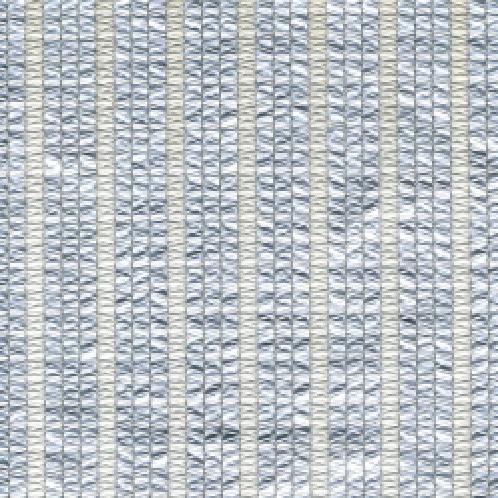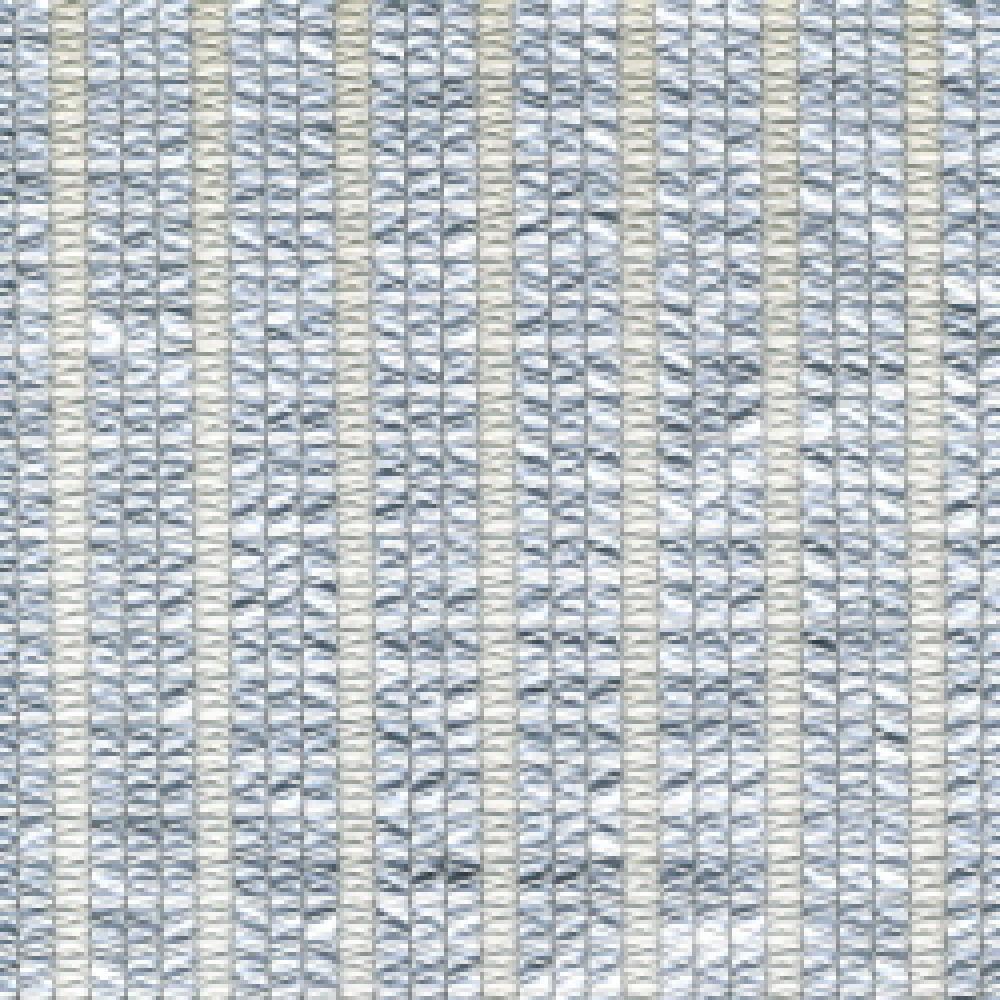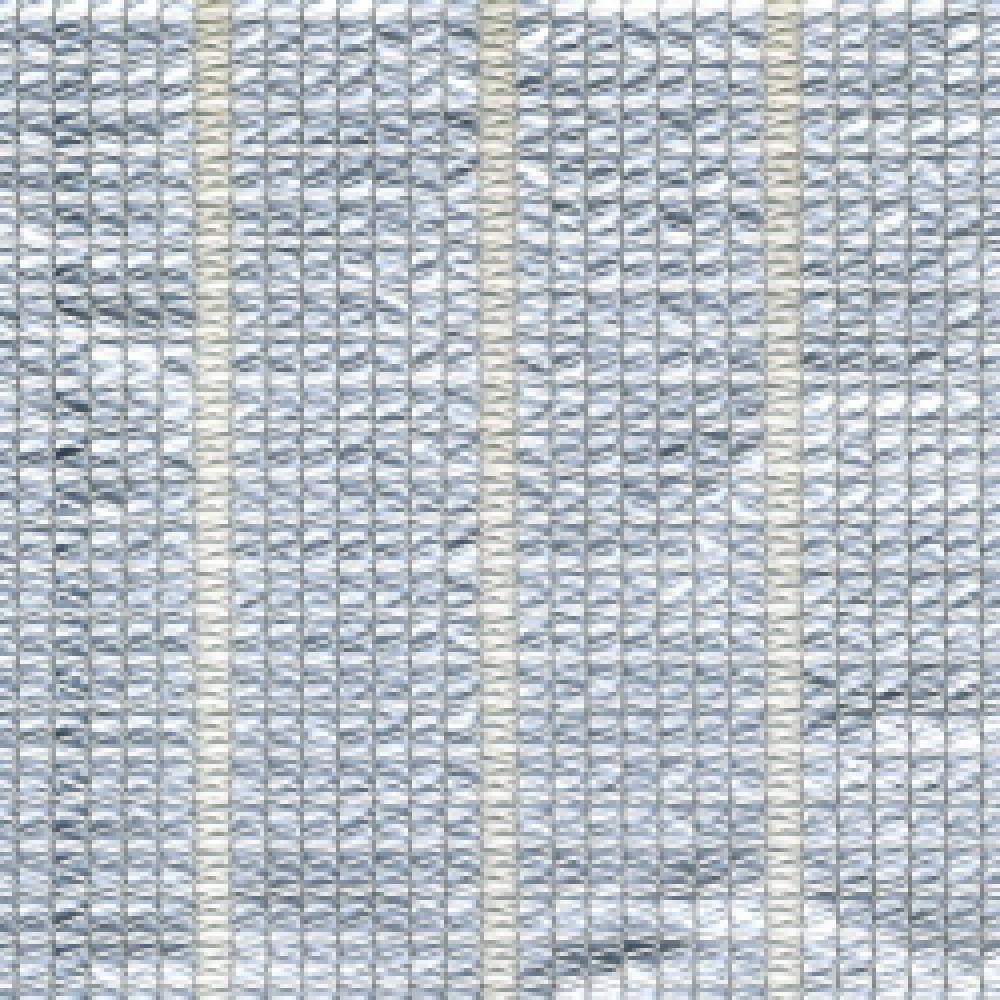ITEM SPECIFICS
-
Brand
Unbranded
-
origin
Republic of Korea
-
Size(Capacity)
PRODUCT DESCRIPTION
Introduction
To understand the concept of the screen here, think of it as a curtain. In other words, as with a curtain, the screen stops sunlight when it is too much as in the summer, and works as an insulator to preserve the heat inside in the winter.
A curtain material should promote the optimum production environment for cultivating vegetables by protecting them from the outside weather conditions.
The general requirements for curtain materials include thermal preservation, durability, physicality, easiness of fabrication, economic, antifogging, sunlight exposure adjustment, natural lighting capability, and sunlight shading effect.
Aluminum screen as a curtain-like material, satisfies all these basic requirements and further remedies some of the shortcomings of the conventional curtain materials, and extends their merits.
Also, the screen prevents the temperature inside a greenhouse and ground temperature from going up by reflecting the sunlight effectively.
Even though the thermal conductivity of aluminum is 846 times larger than that of the air, that is when it is in contact with a thermal source, and aluminum is an excellent reflector of long-wavelength lights that contribute to the heating effect.
One can leave the aluminum screen open during the day to maximize the heating effect, and then close it so as to prevent the escape of the accumulated heat energy, or heat from a heater or boiler to the outside during the night, especially in the winter season. The aluminum screen is a very good product for this purpose.
Applications
-Glass or vinyl greenhouse, as the primary or secondary curtain
-As sun-screen for high temperature seed-raising greenhouse
-For thermally-preserved tunnel
-AS sun-screen for a cattle shed during the summer
-For covering of ginseng field
-For providing a shade for outdoor cultivation, etc.
Characteristics
-Thermal preservation: 30% to 70% energy saving possible when this characteristics of the aluminum screen is exploited.
-Sun-shade: Aluminum screens reflect the hot sunlights during the summer, lowering the indoor temperature more than 7 degree Celsius, making it possible to cultivate seedlings even during the summer.
-Productivity enhancement: The productivity and storage period may improve by 40% in farming cultivation by optimizing temperature, sunlights, shades, darkness, humidity, etc.
-Economic: Aluminum screen is durable and may be used at least four to ten years. It works as a shun-shade, thus saving the money needed for installing an extra sun-shade.
-Sun lighting control: Various models of aluminum screens are available to help the control of sun lighting for crop cultivation. They are folded to a minimal size, and do not block the sun light much when folded.
-Principle of thermal preservation and its efficiency for various materials
-Principle of thermal preservation
Thermal preservation is referring to a function of preventing rapid release of heat accumulated in a greenhouse during the daytime to the outside when the sun is set, especially in a cold weather. There are a few ways of preventing heat escape:
1. Minimization of convective heat transfer
2. Restraining of radiant heat transfer from facility
3. Minimization of heat loss through conductive heat transfer
4. Restrain of ventilation heat transfer
5. Restrain of convective heat transfer and radiant heat transfer from outside of facility
For an effective thermal preservation, accumulation of the solar heating should be effectively achieved during the day, but, in general, the utilization rate of the solar energy is quite low (5.8% to 12%)
Some greenhouses also suffer from rapid heat radiation, causing problem in crop cultivation due to unsuitable temperature condition.
Re-utilization efficiency of solar energy depends on various factors such as the structure of greenhouse, its orientation, and thermal covering material.
- Heat preservation effect of covering materials
The thermal preservation effect can be represented by the thermal preservation efficiency, and, as listed in Table 1 below, in a single-x-layer curtain, the efficiency is 30% for polyethylene, 35% for vinyl chloride, 45% to 50% for a reflecting film, and 65% for a combination of polyethylene plus reflecting film).
Another issue is the number of curtains associated with thermal preservation and other factors. When a reflecting film is used, overall heat transmission drops rapidly when two curtains are used, and an addition of more curtain x-layer has diminishing effect. When a soft film such as PVC is used, thermal preservation effect increases up to three curtain x-layers, but two-x-layered curtain system employing reflective films seems more adequate.
Table 1. thermal preservation efficiency for various covering materials
|
Thermal preservation effect |
Thermal covering materials |
Heating load coefficient (kcal/㎡/h/℃) |
thermal preservation efficiency(%) |
|
|
Glass greenhouse |
Vinyl house |
|||
|
External covering, single x-layer |
|
5.3 |
5.7 |
40 |
|
Fixed, Double-x-layered curtain |
glass, PVC film |
3.2 |
3.4 |
35 |
|
Single-x-layered curtain |
PE film |
3.3 |
3.5 |
30 |
|
PE film |
3.7 |
4.0 |
30 |
|
|
PVC film |
3.3 |
4.0 |
35 |
|
|
non-woven fabrics |
3.0 |
4.3 |
25 |
|
|
Aluminum mixed film |
2.9 |
3.1 |
45 |
|
|
Aluminum evaporated film |
2.7 |
2.9 |
50 |
|
|
Double-x-layered curtain |
PE film two-x-layers |
2.9 |
3.1 |
45 |
|
PE film+aluminum film |
1.9 |
2.0 |
65 |
|
|
(reflecting film) |
|
|
|
|
- Thermal preservation effect with respect to covering methods (Double-x-layered curtains)
In terms of thermal reservation efficiency for double-x-layered curtain materials, it is the lowest for soft films, and the highest for the curtain constructed with a combination of a reflecting film with its reflecting surface facing upwardly and a film with reflecting surfaces on the both sides.
If the reflecting surface is facing inwardly, the thermal preservation capability of a curtain is quite reduced. Accordingly, curtains should be designed and manufactured in such a way that the reflecting surfaces are uniformly oriented toward one direction, and the curtains should be installed with the reflecting surfaces oriented toward the sky, so as to maximize the thermal preservation and light-shading effects.
When a curtain is made with two x-layers, the upper x-layer should be of a double side-reflecting x-layer, and the lower x-layer should have its reflecting surface facing upwardly, so as to maximize its thermal preservation effect.
Also, a reflecting film can preserve the heat when its reflectivity is higher than 60%, and the reflectivity of aluminum is 99%.
- Heating expenses comparison
When purchased initially, non-woven fabric covering material would be cheaper at 6,500,000 won, compared to 22,500,000 won for aluminum screen, but the aluminum screen is more economical after three years. Selection in this regard is a key decision determining the success of the greenhouse farming business.
In determining the covering materials, the kinds of crops should be first decided, and shape, size, and kind of greenhouse suitable for the crops should be then decided, and finally suitable covering materials should be decided. Factors to be considered are external conditions, farming seasons, covering or improvement efforts. The outer x-layer is exposed to the outside weather conditions, and thus the expected lifetime, physical and optical characteristics, thermal preservation characteristics, and easiness of repairing and folding should be compared and reviewed in selection. As for the inner x-layer, as represented by inner covering curtain, the thermal preservation characteristics, workability, lifetime, etc. are the important factors in selection. Especially, sunlight shading or light reflection materials should be adequate for the application in the functionality and the size.
Aluminum screen has a number of merits: it comes in many kinds to satisfy various demands related to the sunlight shading and thermal preservation efficiencies, and since it is both for the thermal preservation and sunlight shading, replacement of curtain is not necessary when seasons change, and it lasts seven to eight years.
Volumetric thermal preservation materials preserve the heat better when they are thicker. But when they are rolled in an automated system, the diameter of the rolled become very large, tens of times, imposing a heavy load to the rolling system. In order to solve this problem, continuous research and developmental efforts have been exerted to come up with thin and superior materials, and one of the outcomes from the efforts is this aluminum screen.
Reference table for screen selection in the case of varying products
Vegetables
|
Category
Cultivating crop |
For lagging, humidity control |
For lagging, for shading |
For shading |
For Darkroom |
|
Eggplant |
Shading20% Lagging45% |
Shading40% Lagging50% |
Shading60% Lagging20% |
- |
|
Shading50% Lagging55% |
Shading60% Lagging20% |
|||
|
Cucumber |
Shading20% Lagging45% |
Shading40% Lagging50% |
Shading60% Lagging20% |
- |
|
Shading50% Lagging55% |
||||
|
Paprika |
Shading20% Lagging45% |
Shading40% Lagging50% |
Shading60% Lagging20% |
- |
|
Shading50% Lagging55% |
Shading50% Lagging20% |
|||
|
Tomato |
Shading20% Lagging45% |
Shading40% Lagging50% |
Shading60% Lagging20% |
- |
|
Shading50% Lagging55% |
Shading50% Lagging20% |
Seasonal flowers
|
Category Products |
For lagging, humidity control |
For lagging, for shading |
For shading |
For Darkroom |
|
Carnation |
Shading20% Lagging45% |
Shading40% Lagging50% |
Shading60% Lagging20% |
- |
|
Shading50% Lagging55% |
||||
|
Roses |
Shading20% Lagging45% |
Shading40% Lagging50% |
Shading60% Lagging20% |
- |
|
Shading50% Lagging55% |
Shading50% Lagging20% |
|||
|
Shading65% Lagging60% |
Shading35% Lagging25% |
|||
|
Tulip |
Shading20% Lagging45% |
Shading65% Lagging60% |
Shading65% Lagging25% |
- |
|
Freesia |
- |
Shading50% Lagging55% |
Shading35% Lagging25% Shading50% Lagging20% |
- |
|
Shading65% Lagging60% |
||||
|
Shading75% Lagging65% |
||||
|
Gerbera |
Shading20% Lagging45% |
Shading40% Lagging50% |
Shading60% Lagging20% Shading50% Lagging20% |
Shading99% Lagging75% |
|
Shading50% Lagging55% |
||||
|
Shading65% Lagging60% |
||||
|
Cymbidium |
Shading20% Lagging45% |
Shading50% Lagging55% |
Shading50% Lagging20% |
Shading99% Lagging75% |
|
Shading65% Lagging60% |
Shading35% Lagging25% |
|||
|
Bouvardia |
Shading20% Lagging45% |
- |
- |
Shading99% Lagging75% |
|
Alstroemeria |
- |
Shading50% Lagging55% |
Shading50% Lagging20% |
- |
|
Shading65% Lagging65% |
Shading35% Lagging25% |
|||
|
Anthurium |
Shading20% Lagging45% |
Shading65% Lagging60% |
Shading65% Lagging60% |
- |
|
Shading75% Lagging65% |
Shading75% Lagging30% |
|||
|
Shading85% Lagging70% |
Shading85% Lagging35% |
This table is only for guideline reflecting the average in the domestic farming cases, and the precise data could be different depending on the specific weather and soil conditions in each region.
PAYMENTS DETAILS
- Telegraphic Transfer : T/T
- Name : Jin-Sang An
SHIPPING
- Guyang-ri, Neungseo-myeon, Yeoju-gun, Gyeonggi-do 469-812, Korea, 경기도,
The person in charge
Address
Guyang-ri, Neungseo-myeon, Yeoju-gun, Gyeonggi-do 469-812, Korea, 경기도,
-
- Business Type :
- Manufacturer
-
- Main Product :
-
- Established :
- 2000-01-01
Please suggest a variety of your ideas such as design, impact, enhancements, etc
Please enter the text on the left image to prevent automatic input.
0 / 4000
CUSTOMER REVIEWS (0)
COMPARISON TO SIMILAR ITEMS more
- No Items
- supplier level
-
 GOLD
GOLD
- DEL TEX SCREENAgriculture.co.L Seller's Store
- Seller's Store url
- Response Level
★ ★ ★ ★ ★

- Supplier Level
★ ★ ★ ★ ★

- Transaction Level
★ ★ ★ ★ ★

- No Items







